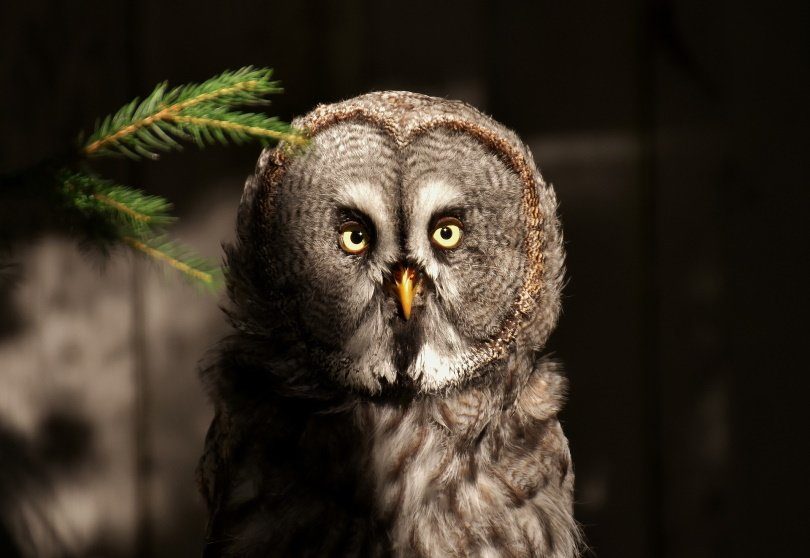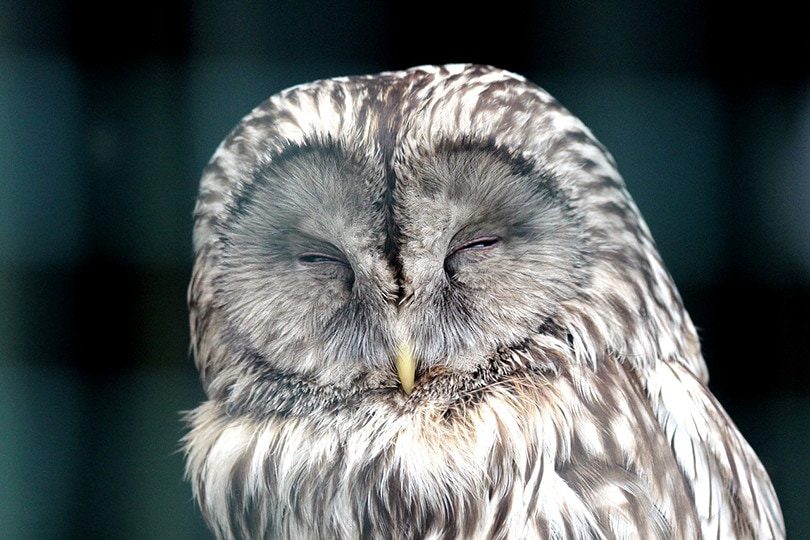Do Owls Hibernate or Migrate? What You Need to Know!
Last Updated on

Owls are stunning, elusive birds that are fascinating for several reasons—such as doing that really cool (and really creepy) 270-degree head turn. One common question people have about owls is what happens to them during the winter. Do they hunker down and hibernate till it gets warm, or do they migrate like many other types of birds do during the colder months of the year?
The answer to the question of whether owls hibernate or migrate is a bit complicated. It turns out that they mostly do neither, but there are some exceptions. But, if they aren’t hibernating or migrating, how are they surviving the cold?

Do Owls Hibernate?
Many animals hibernate when the weather turns towards the cold, and it gets harder to find food. A lot of people think hibernating animals are sleeping away the winter months, but that’s not what’s happening. Hibernation is the act of conserving energy when there isn’t enough food around and involves specific physiological changes such as a slowed metabolism. Doing this enables animals to survive the harsher parts of the year.
Owls, however, have no need to hibernate. Their bodies are uniquely adapted to survive harsh temperatures, making it easier for them to deal with the cold and even hunt down prey when there’s snow.

Do Owls Migrate?
For the most part, because they have adapted to survive in colder weather, owls do not have a need to migrate either. They also don’t have the innate instinct to migrate that several bird species have. However, some species of owls do engage in movement during the winter that is like migration.
When owls move, they are moving due to a lack of food in the area and are hunting for more accessible and abundant prey to catch. This behavior is known as irruption. However, when owls do this, they don’t follow any particular routes or even move at the same time every year (or every year at all), making it different from migration.
Some of the species of owls that practice irruptive behavior include the Snowy Owl, the Great-Horned Owl, and the Short-Eared Owl.
How Do Owls Survive the Winter?
Now we know that owls don’t hibernate, and only a few species move around during the winter in a way similar to migration. Since owls stay in place during sometimes extremely bitter cold and weather, how do they survive? Primarily because of how their bodies have adapted to help them.

Feathers
Owls, like all birds, produce an extra layer of down feathers during colder months to help them stay warm. These down feathers are located underneath their main layer of feathers and help trap warm air close to the body. Not only do they trap warm air, but if an owl shivers and fluffs these feathers up, the air can become even warmer. This process helps to keep an owl’s core temperature up.
Feet
Owls have fascinating feet—feet that can help them stay warm in winter. How could feet possibly accomplish this?
For starters, owls don’t have a lot of fluid or pain receptors in their feet. The lack of these helps their inner temperature be less affected by outer temperatures they may encounter. So, they may get cold feet after landing on something icy, but they won’t be cold themselves.
That’s not all, though! They also have a unique blood flow system that helps them to stay warm. Blood flowing from their feet to their body is warmed by the blood flowing to the feet from the body. The cooler blood going to the feet reduces heat loss there, while the warmer blood going to the body keeps everything else from getting too cold. Pretty neat, huh?
Finally, some species of owls, such as the Snowy Owl, have feathers on their legs and feet that help them stay warmer.
Ears
Despite our inability to see them (because they are hidden beneath feathers), owls do have ears. The interesting thing about an owl’s ears is that they aren’t aligned like ours are. Instead, their ears are off-center, with one ear being higher than the other. They also have facial disks that help sound get aimed into their ears. These disks and the off-center alignment enable them to have fairly exceptional hearing that keeps them alive through the winter. With this kind of hearing, owls can hear prey that has buried into snow to stay warm. That makes it much easier to fly down and snatch up any animals that are hidden from sight.


In Conclusion
Owls are unique birds that have no need for hibernation or migration. They have adapted and are able to survive in cold weather due to their warm feathers, the blood flow system in their feet, and keen hearing. Some species of owls do move around in colder months to find more abundant prey in what is known as irruption. But, while this behavior is like migration, it isn’t the same thing.
- See also: Do Owls Sleep on Their Stomach?
Featured Image Credit: Alexas_fotos, Pixabay
About the Author Robert Sparks
Robert’s obsession with all things optical started early in life, when his optician father would bring home prototypes for Robert to play with. Nowadays, Robert is dedicated to helping others find the right optics for their needs. His hobbies include astronomy, astrophysics, and model building. Originally from Newark, NJ, he resides in Santa Fe, New Mexico, where the nighttime skies are filled with glittering stars.
Related Articles:
How to Clean a Refractor Telescope: Step-by-Step Guide
How to Clean a Telescope Eyepiece: Step-by-Step Guide
How to Clean a Rifle Scope: 8 Expert Tips
Monocular vs Telescope: Differences Explained (With Pictures)
What Is a Monocular Used For? 8 Common Functions
How to Clean a Telescope Mirror: 8 Expert Tips
Brightfield vs Phase Contrast Microscopy: The Differences Explained
SkyCamHD Drone Review: Pros, Cons, FAQ, & Verdict
